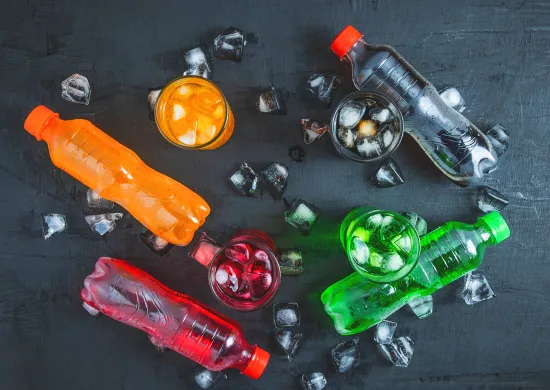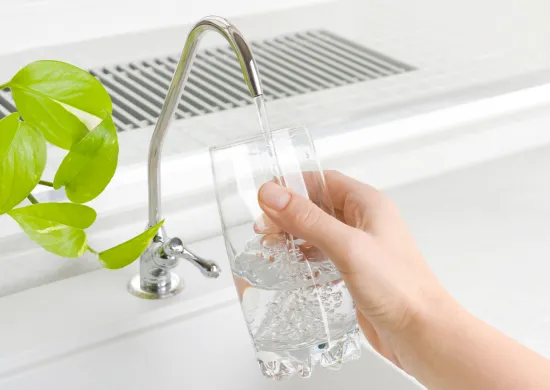

There are upwards of 80 common water contaminants known to pose a significant risk to our health. Microbial contaminants such as pathogens and bacteria that can go undetected by human senses. Organic pollutants like fertilisers and heavy metals that can be equally tricky to notice. Often, it takes months for a community to become aware of water contamination. Typically, the problem only comes to light once people begin to get sick.
- Use carbon filtration to absorb organic pollutants like pesticides, petrochemicals and lead
- Use UV water filtration to eradicate microbial contaminants like pathogens and bacteria
- Use Reverse Osmosis to remove any remaining dissolved particles in water, including nitrates, pesticides, metals, and minerals.
Five common contaminants in your drinking water
As water flows through streams, rivers, and lakes, then filters through rocks and soil, it will inevitably come into contact with a range of different materials — each of which can dissolve into the water source. As such, any water supply by its very nature will likely contain contamination of sorts, whether natural or artificial. These are five common contaminants present in most water supplies across Ireland.
1. Nitrates
Nitrates are chemicals found in fertilisers, manure, or liquid waste discharged from septic tanks. Rain causes runoff from farms, leading to a build-up or fertilisers and manure in waterways. Natural bacteria found in soil then converts the fertiliser into nitrates, ultimately contaminating the drinking water supply.
Nitrates are known as an acute contaminant, meaning they can cause a health condition within hours or days of a single exposure. Nitrates affect red blood cells’ ability to carry oxygen around the body. High levels of nitrates in water pose less of a threat to healthy adults as affected red blood cells can quickly recover, but they can quickly harm infants due to a severe condition known as blue baby syndrome whereby a lack of oxygen puts the baby’s life at serious risk.
The EU Drinking Water Directive sets the acceptable limit for nitrate concentration at 50mg/l of water.
2. Bacteria & Viruses
Some form of bacteria is present in all water supplies. However, a select few can cause serious damage to human health. E. coli is one such bacteria, most often found in the intestines of healthy cattle or the gut of infected humans.
Waterways near cattle farms can become infected with E. coli as a result of rainwater washing away manure; while polluted stormwater runoff, sewage overflows, and flooding can make urban and private water sources particularly vulnerable to bacterial contamination.
Bacteria such as E. coli cause medical conditions like abdominal discomfort, fever, and vomiting. In more serious cases, pneumonia and meningitis can also occur. Most people recover from E. coli within a week. However, infants and the infirm can suffer life-threatening complications.
3. Arsenic
Arsenic is a heavy metal that occurs naturally in many rocks and sediments. Extensive mining activity, certain geochemical conditions in underground aquifers, and its use in pesticides can release arsenic into groundwater supplies.
Arsenic is seen as a chronic contaminant, and long-term arsenic exposure has been known to cause bladder, kidney, liver, prostate, and lung cancer as well as skin lesions; while it’s also been associated with cardiovascular disease and diabetes. Moreover, foetal exposure during pregnancy can impair cognitive development in babies before their birth.
Arsenic is toxic even at low levels, so the EU Drinking Water Directive sets the limit for arsenic at a 10μg/l.
4. Fluoride
Fluoride is a natural mineral found in the earth’s soil. When groundwater passes through it, the mineral dissolves resulting in low levels of fluoride in nearly all water supplies.
The Irish Expert Body on Fluorides and Health recognises the benefits of adding fluoride to water as it is a proven way to reduce tooth decay in both children and adults thanks to the mineral helping to strengthen the teeth’s enamel. However, there are questions as to whether fluoride in water is safe? Over-exposure to fluoride in the first eight years of life can cause fluorosis, a condition that leaves white marks, dark stains or noticeable hollow pits in teeth.
Therefore, the recognised recommended concentration of fluoride in water is one part per million.
5. Lead
Lead is another heavy metal that can find its way into public supplies, but rather than coming from a natural source; it typically results from the antiquated plumbing that’s piping water into people’s homes. It is a particular risk to children as growing bodies absorb it more readily, leading to damaging effects on both the brain and nervous system. That said, lead is also a problem for adults as exposure causes cardiovascular problems, increased blood pressure, decreased kidney function, and reproductive issues.
The regulatory limit for lead in drinking water has gone down in recent years and currently sits at just 10µg/L.
How to prevent contaminants in your drinking water
There are simple steps you can take to ensure your water is free from these common water contaminants. Carbon filtration uses extremely permeable pieces of carbon to remove organic toxins from water, absorbing impurities like pesticides, petrochemicals, even heavy metals like lead. However, carbon filtration is not effective against waterborne bacteria, viruses and pathogens.
UV water filters fill the gap by removing invisible pathogens from a water supply. UV light eradicates bacteria, ensuring water is highly purified and 99.9999% pathogen-free. That said, UV light alone is not sufficient as it cannot remove organic materials like chemicals and metals.
The most effective filtration available is Reverse Osmosis, which removes all dissolved particles from water — ranging from nitrates and pesticides down to metals and minerals by forcing water through a microfilter. The downside of Reverse Osmosis is that it eliminates beneficial minerals as well, which can affect the taste.
If you don’t use a water filter and you suspect your supply may be contaminated, contact Irish Water and ask them to test your water if necessary. Irish Water is the central water utility company created by the government with the mandate to provide safe, clean drinking water to the Irish public.
Still, there remains the risk of potential health hazards as illustrated by recent reports that show unsafe levels of lead in drinking water across country — in some cases, at 15-times above the legal limit. The lesson? Never assume a water supply is safe. Ask for analysis where necessary and always use the appropriate level of filtration.


